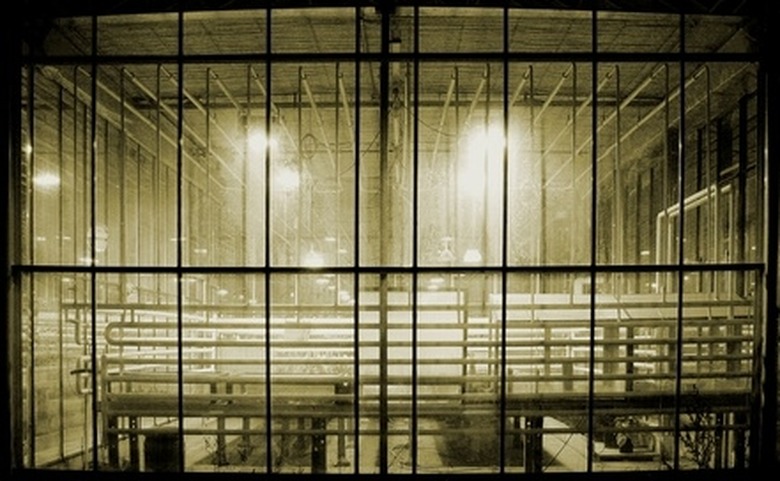How To Use A Geiger Counter
Hans Geiger and Ernest Rutherford invented the original Geiger counter in 1908 to detect alpha particles. Geiger and Walther Mueller revised it in 1928 to detect other forms of radiation as well. The Geiger counter's sensor is a central metal wire anode surrounded by a thin metal cathode tube filled with neon, argon and a halogen gas that detects radiation by how much the gas inside the tube is ionized.
Step 1
Turn on the Geiger counter to apply an electrical charge to the anode wire. The counter will click or flash about 10 to 20 times per minute as it detects background radiation.
Step 2
Pass the sensor, called a Geiger-Mueller tube, over the material to be evaluated with the thin mica window facing the material. Radiation from the material, if any, will pass through the window and ionize the gas inside the tube.
Step 3
Study the readout, whether a needled meter, flashing LED or audible clicking. If this is higher than the level of the background radiation, the material is radioactive.
Step 4
Count the number of clicks or flashes or read the attached meter to determine how radioactive the material is.
Things Needed
- Geiger counter
- Material to test for radioactivity
TL;DR (Too Long; Didn't Read)
By replacing the gas in the sensor with boron trifluoride and adding a plastic moderator, the Geiger counter can be used to detect neutrons.
Warning
Be sure to wear appropriate radiation protection when using the Geiger counter. Alpha particles (helium nuclei) are low-energy radiation that can be stopped by several inches of air, sheets of paper or layers of clothing. Beta particles (high-energy electrons) are more powerful, able to penetrate aluminum sheeting up to three millimeters thick. Gamma particles (high-energy photons) can penetrate several centimeters of lead and require thick lead shielding to be stopped. All Geiger counters experience a small amount of "dead time" between particles ionizing the gas in its sensor, usually measured in microseconds. While a mathematical formula exists to compensate for dead time, in most cases dead time can be ignored, except when dealing with high-energy radiation. Geiger counters can detect only the presence and intensity of radiation. To determine particle energy levels, use a proportional counter. Geiger counters cannot accurately measure the presence of radon gas in a home. To do this, purchase a radon detector with an activated charcoal filter.
Cite This Article
MLA
Contributor, . "How To Use A Geiger Counter" sciencing.com, https://www.sciencing.com/use-geiger-counter-2074400/. 24 April 2017.
APA
Contributor, . (2017, April 24). How To Use A Geiger Counter. sciencing.com. Retrieved from https://www.sciencing.com/use-geiger-counter-2074400/
Chicago
Contributor, . How To Use A Geiger Counter last modified March 24, 2022. https://www.sciencing.com/use-geiger-counter-2074400/
